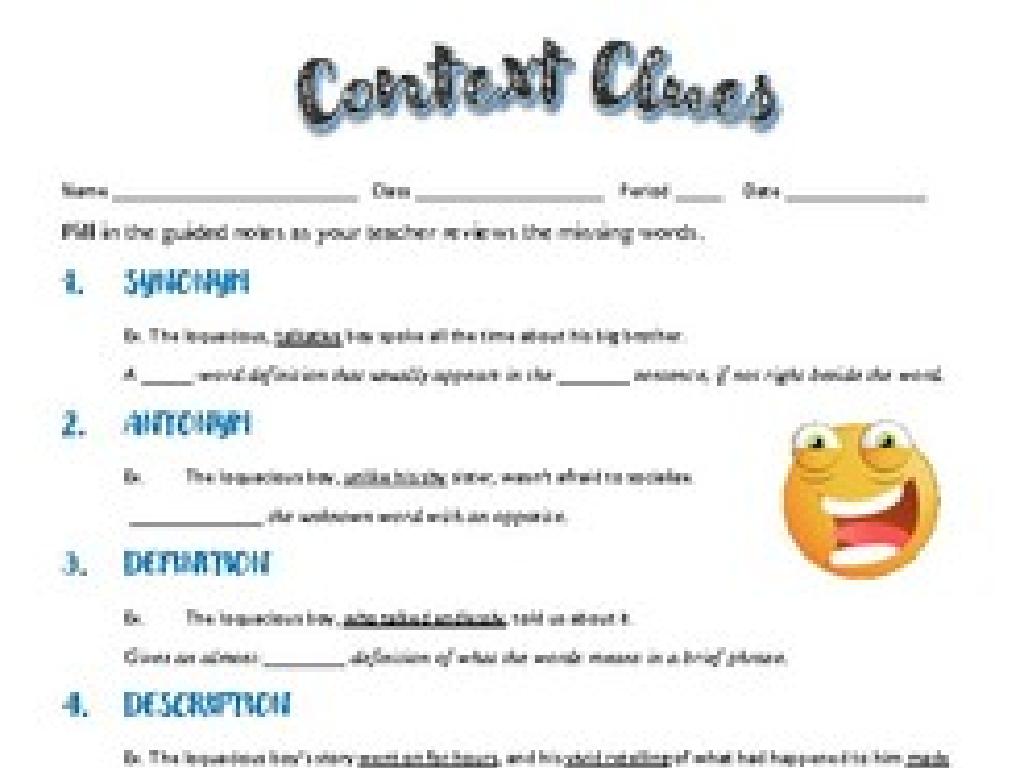Alphabetical Order
Subject: Language arts
Grade: Eighth grade
Topic: Reference Skills
Please LOG IN to download the presentation. Access is available to registered users only.
View More Content
Mastering Alphabetical Order
– Grasping the importance of alphabetical order
– It’s a fundamental skill for efficient information retrieval.
– Alphabetical order in daily life
– Used in libraries, directories, and playlists.
– Organizing information alphabetically
– From books to contacts, it helps us find things quickly.
– Enhancing research skills with order
– Alphabetical order is key in indexes, glossaries, and bibliographies.
|
This slide introduces the concept of alphabetical order, emphasizing its significance in various aspects of everyday life and academic research. Students should understand that mastering alphabetical order is not just a school exercise but a practical skill that can improve efficiency and organization in many scenarios. Highlight examples such as finding a name in a contact list, locating a book in the library, or sorting a music playlist. Discuss how alphabetical order is crucial for researchers when dealing with large volumes of information, such as sorting through a bibliography or using an index to find topics within a book. Encourage students to think of other areas where alphabetical order is applied and to practice by organizing items or creating lists.
Mastering Alphabetical Order
– Review the 26-letter alphabet
– Order words by first letter
– Start with the first letter of each word
– Same first letters: next steps
– If first letters match, compare the second letters
– Practice with examples
– Use a list of words like: cat, car, can
|
This slide is aimed at reinforcing the understanding of alphabetical order, a fundamental reference skill. Begin with a quick review of the 26 letters of the alphabet to ensure all students are on the same page. Then, explain how to arrange words by looking at the first letter of each word. Emphasize what to do when the first letters are the same by comparing subsequent letters until the words can be differentiated. Provide students with hands-on practice by giving them a list of words to arrange in alphabetical order. This exercise will help solidify their understanding of the concept. Encourage students to ask questions and share their thought process during the activity.
Mastering Alphabetical Order
– Alphabetize beyond first letter
– When words begin with the same letter, look to the next letters.
– Use subsequent letters for order
– Compare second, third, or fourth letters as needed.
– Practice with ‘Apple’, ‘Ape’, ‘Apex’
– ‘Ape’ comes before ‘Apple’, which comes before ‘Apex’.
|
This slide aims to teach students how to alphabetize words when they start with the same letter, by looking at the subsequent letters to determine their order. It’s crucial to explain that they should compare the second letter of each word first, and if those are the same, move to the third letter, and so on. Use examples like ‘Apple’, ‘Ape’, and ‘Apex’ to illustrate this concept. Have students practice by alphabetizing a list of words, ensuring they understand the process of comparing letters beyond the first. Encourage them to think of other examples and to explain their reasoning for the order they choose.
Mastering Alphabetical Order: Names Edition
– Alphabetizing by last names
– Rules for special last names
– Consider Mc/Mac as ‘Mac’ and St. as ‘Saint’
– Dealing with prefixes and hyphens
– Prefixes like ‘De’ or ‘Van’ may or may not be separated
– Practice with common surnames
– Example: Smith, Johnson, O’Connor, St. James
|
This slide aims to teach students the intricacies of alphabetizing names, a key reference skill. Start by explaining the general rule of alphabetizing by last names. Then, delve into special cases, such as last names with prefixes like ‘Mc’ or ‘Mac,’ and how to handle hyphenated names. Provide guidance on whether to include prefixes as part of the alphabetical order. Offer practice examples using common last names to solidify understanding. Encourage students to think critically about how to organize names and to recognize patterns in alphabetical order, which will aid in their use of reference materials and databases.
Navigating the Library: Alphabetical Order
– Libraries and alphabetical order
– Books are often sorted alphabetically by the author’s last name.
– Dewey Decimal System basics
– A classification system that organizes books by subject.
– Finding books alphabetically
– Use the catalog to locate a book’s call number and its place on the shelf.
– Efficient library searches
|
This slide introduces students to the concept of alphabetical order in the context of library organization. Emphasize that understanding how books are sorted makes finding resources more efficient. The Dewey Decimal System is a tool that libraries use to categorize books by subject matter, and it’s important for students to recognize that while it’s numerical, books within the same category can be further organized alphabetically. Teach students how to use the library’s catalog to find a book’s call number, which combines the Dewey Decimal classification with the author’s name in alphabetical order. Encourage students to practice looking up books and locating them on the shelves to become more familiar with the library’s layout.
Alphabetical Order in Technology
– Sorting emails and contacts
– Devices often sort emails and contacts alphabetically for quick access.
– Organizing computer files
– Naming files systematically makes retrieval easier.
– Alphabetical order in search engines
– Search engines display results alphabetically after relevance.
– Enhancing digital literacy
|
This slide aims to show students the practical applications of alphabetical order in everyday technology use. Emphasize how sorting emails and contacts alphabetically can save time and increase efficiency. Discuss the importance of organizing files and folders on a computer to improve productivity and prevent loss of important documents. Highlight how search engines use alphabetical order as a secondary sorting method after ranking results by relevance. This understanding enhances digital literacy, preparing students for a technology-driven world. Encourage students to share their experiences with alphabetical sorting in technology and to practice these skills during computer lab sessions.
Class Activity: Alphabet Hunt
– Find classroom items for each alphabet letter
– Create an alphabetized item list
– Organize items from A to Z
– Share your list with the class
– Discuss the lists as a group
– Why did you choose these items? Any patterns?
|
This activity is designed to engage students with the concept of alphabetical order in a fun and interactive way. Students will search the classroom for items that begin with each letter of the alphabet, which helps them to think critically about the words and their spellings. After gathering the items, they will create a list and organize it alphabetically, reinforcing their understanding of the order. Sharing and discussing the lists in class will provide an opportunity for students to explain their thought process and to see how their classmates approached the task. For the teacher: Prepare a diverse classroom environment with various items, ensure every student can find at least one item for each letter, and guide the discussion to highlight the importance of alphabetical order in real-life scenarios such as in libraries, directories, or indexes.
Wrapping Up: Alphabetical Order
– Recap: Why Alphabetical Order Matters
– Organizes information for easy access and reference
– Review: Key Points of Alphabetical Order
– Remember how to sort words and the role of guide words
– Engage: Q&A Session
– Final Thoughts: Applying Skills
– Use these skills in libraries, directories, and more
|
As we conclude today’s lesson, emphasize the importance of alphabetical order as a fundamental skill for organizing and retrieving information efficiently. Review the key points, including how to sort words alphabetically and the use of guide words in dictionaries. Encourage students to ask questions to clarify any doubts, ensuring they are comfortable with the concept. Highlight the practical applications of alphabetical order in everyday life, such as finding a book in the library or looking up a word in the dictionary. Remind students that these skills will be useful throughout their academic and professional lives.






